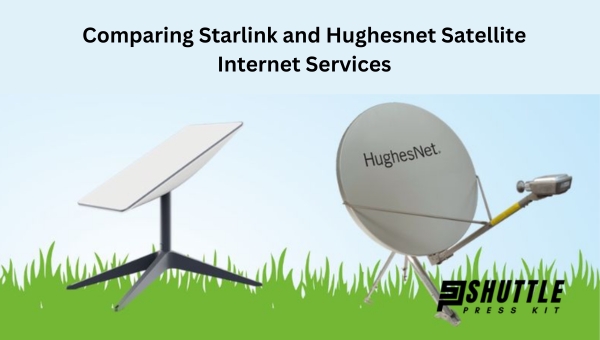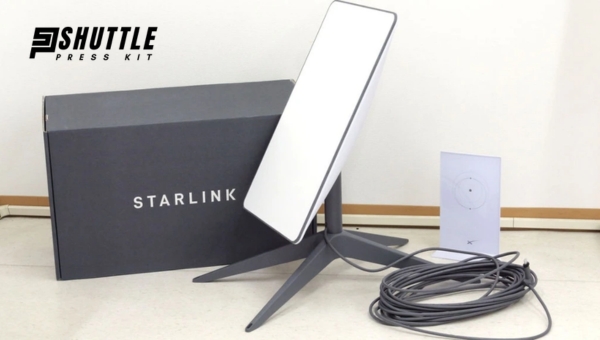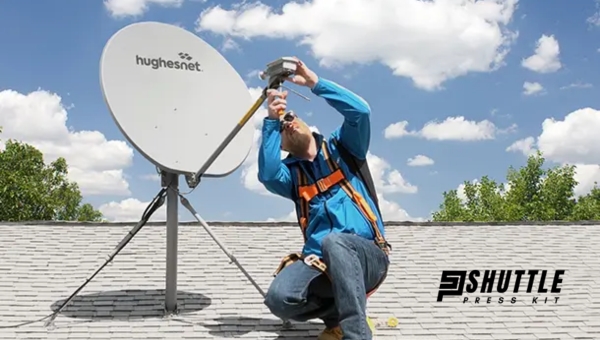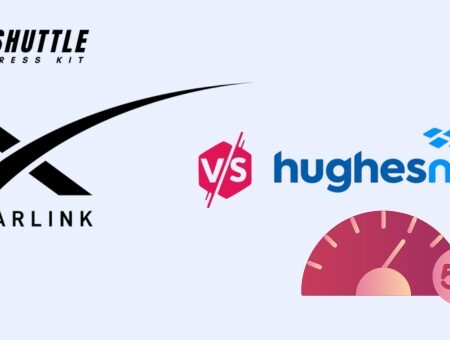Everyone requires a strong, reliable internet connection in today’s digital age. It powers our work, entertainment, communication and more. The burning question remains: Starlink vs.
Hughesnet: Which Satellite Internet Provider Is Best? This detailed guide aims to untangle this modern-day conundrum, ensuring you make an informed decision suiting your unique needs.
If we leap right into the crux of the matter: making a direct choice between Starlink and Hughesnet ultimately boils down to weighing individual strengths against potential weaknesses that these superior satellite internet providers offer.
Various factors such as cost, speed, coverage extend and user experiences combine to shape what is ‘best’ for each consumer individually.
Comparing Starlink and Hughesnet Satellite Internet Services
When it comes to evaluating whether Starlink is better than Hughesnet for satellite internet service, it largely depends on specific user requirements and geographic location.
Starlink shines with its impressively high speeds, making it an appealing choice for users who prioritize rapid download and upload times. This advantage is significant, especially in regions where Starlink’s coverage is strong.
However, the initial up-front cost and limited availability in certain areas might deter some potential users. On the other hand, Hughesnet offers nationwide service, ensuring that almost anyone in the U.S. can access satellite internet regardless of their location.

It provides a variety of plans to cater to different internet usage needs, from minimal browsing to extensive video streaming.
Choosing between Starlink and Hughesnet requires weighing these factors carefully. For individuals who demand the fastest possible speeds and are within the coverage area (and willing to absorb higher initial costs), Starlink could be considered superior.
Conversely, those seeking reliable nationwide access with flexible data plan options might find Hughesnet more fitting to their needs.
Also Read: How to Set Up Wi-Fi on Satellite Internet: Easy Steps!
Overview of Starlink Internet Packages
Starlink provides a variety of internet plans designed to cater to different users, from residential customers in remote areas to RV owners and those requiring internet while on the move.

This global satellite internet service by SpaceX aims to offer high-speed connectivity options that suit various needs and preferences. Here’s a concise breakdown of the available plans:
- Starlink Standard (Residential):
- Cost: $120 per month
- Hardware Fee: $599 or $2,500
- Features: Offers unlimited standard data with speeds ranging from 20–220 Mbps.
- Starlink Priority:
- Monthly Price Range: $140–$500
- Hardware Fee: Same as above ($599 or $2,500)
- Features: Similar unlimited standard data but includes multiple priority data plan options for speed.
- Starlink Mobile (Formerly RV Plan):
- Monthly Fee: $150 for Regional, $200 for Global plan
- Hardware Cost: $599 for portable hardware or $2,500 for in-motion use.
- Features & Restrictions: Geared towards travelers and mobile homes, requiring stationary use during operation.
- Starlink Mobile Priority:
- Cost Per Month Range: From $250 up to $5,000 based on chosen priority level.
- Hardware Investment: A fixed rate of $2,500
- Special Conditions & Capabilities: Crafted for uninterrupted connectivity while on the move with varying degrees of prioritized access and service levels across different plans.
Each plan’s specifics may be adjusted based on local capacity issues or potential changes in policy or pricing structures by Starlink over time.
Importantly, no long-term contracts bind you; hence you can alter your subscription status as your needs evolve without enduring penalties typically associated with such services.
Also Read: What is a Satellite Phone? Uncover the Mystery Now!
Overview of HughesNet Internet Packages
HughesNet offers a variety of internet plans tailored to meet different usage needs, from basic web browsing to more data-intensive activities like streaming and gaming.

These plans cater to users seeking satellite internet options, especially in areas where terrestrial broadband connections are limited or unavailable. Below is a brief overview of the available HughesNet packages:
- HughesNet Select Plan:
- Price: $49.99 per month
- Data: Unlimited (with no hard data caps)
- Speed: Up to 50 Mbps
- Ideal for basic browsing and email use
- HughesNet Elite Plan:
- Price: $64.99 per month
- Data: Unlimited (with no hard data caps)
- Speed: Up to 100 Mbps
- Suited for social media, streaming music, and moderate video content consumption
- HughesNet Fusion Plan:
- Price: $94.99 per month
- Data: Unlimited (with adaptive speeds after reaching plan limit)
- Speed: Up to 100 Mbps through a hybrid satellite and terrestrial wireless technology setup
- Recommended for households with video streaming and online gaming needs (though not suggested as a full replacement for TV services or high-speed gaming requirements)
All HughesNet plans to enforce a mandatory two-year contract commitment upon signing up, ensuring customers receive consistent service while allowing the company to maintain its network efficiently across all supported regions.
Also Read: Starlink Installer Central Wisconsin: Your Ultimate Guide
Comparing Starlink and HughesNet Internet Speeds
When considering satellite internet services, a critical factor for many is the comparative speeds offered by providers such as Starlink and HughesNet.
Understanding the differences in their service speeds can help determine which option best suits your needs for high-speed internet, especially in remote locations.
Below, we delve into how these two services stack up in terms of internet speed capabilities.
- Starlink’s Speed Range
- Starlink has introduced an innovative approach with its low-Earth orbit (LEO) satellites, leading to notable speed advantages.
- During “Basic Access” periods, users can expect download speeds ranging from 20 to 100Mbps.
- These speeds are influenced by a combination of factors including user location, time of day, and overall network demand.
- HughesNet’s Speed Offering:
- HughesNet operates within a different architecture using geostationary orbit (GEO) satellites positioned much farther from Earth.
- This placement impacts speed potentials but still provides download speeds averaging between 50 to 100Mbps.
- However, similar to any internet service, actual experienced speeds may vary depending on network load and other external factors.
- Latency Differences:
- One significant area where Starlink generally outperforms HughesNet is in latency due to the proximity of its satellites to Earth—ranging from 111 miles to 1,242 miles above us—compared to GEO satellites’ fixed positions about 23,000 miles away.
- Lower latency translates into smoother experiences with less lag for activities like online gaming or video conferencing.
- Network Capacity Impact:
- Both services are subject to variations in performance based on overall network capacity constraints and customer demand at any given time or place.
- It’s vital for potential users to consider not just average speeds but also how peak usage times might affect their online experience.
Understanding these key points about Starlink and HughesNet can guide individuals toward making an informed choice about their satellite internet provider based on speed needs alongside other personal or professional requirements.
Also Read: Subaru Starlink App: Enhance Your Drive with Smart Features
Comparing Latency: Starlink vs. HughesNet
When choosing a satellite internet provider, one significant factor to consider is latency. Latency refers to the delay before a transfer of data begins following an instruction for its transfer.
This can greatly affect activities such as online gaming, video conferencing, and loading web pages. Here’s how Starlink and HughesNet compare in terms of latency:
- Starlink’s Technological Edge: Utilizing a constellation of low Earth orbit (LEO) satellites, Starlink offers reduced latency due to the closer proximity of its satellites compared to traditional geostationary satellites used by other providers.
- HughesNet’s Geostationary Approach: With satellites positioned much farther from Earth in geostationary orbits, HughesNet traditionally faces higher latency issues which can impact real-time online activities.
- Lower Latency with Starlink:
- Typically ranges between 20ms to 40ms.
- This reduced lag can significantly enhance the experience for activities requiring real-time interaction, like competitive gaming or live video chats.
- Higher Latency with HughesNet:
- Often exceeds 600ms.
- This level of delay is more noticeable and can hinder seamless streaming, gaming, and browsing experiences.
In summary, if your usage heavily relies on low-latency connections for prompt data transmission—such as online gaming or using VoIP services—Starlink would likely serve you better than HughesNet based on current technology and satellite positions.
Also Read: How Big is a Starlink Satellite? Discover the Surprising Details!
Comparing Starlink and HughesNet Internet Pricing
Choosing between Starlink and HughesNet for your high-speed satellite internet provider involves considering various factors, including the initial setup costs, monthly fees, data caps, and the overall speed each service offers.
To help make this decision clearer, below is a simplified comparison based on current pricing structures for both internet services:
- Monthly Service Fees:
- Starlink: Charges $120 per month for its service which includes unlimited data access and promises faster download speeds.
- HughesNet Fusion: Offers a plan at $174.99 per month with a data cap of 200GB.
- One-Time Hardware Costs:
- Starlink:
- Standard Setup Kit: Requires a one-time purchase of hardware costing $599.
- High-Performance Kit: Available at an upfront cost of $2,500 for those needing enhanced service capabilities.
- HughesNet: Does not typically require such an expensive initial hardware investment for standard installations. This summary allows prospective subscribers to weigh these factors according to their specific needs and budget constraints before making a choice.
FAQs
What is satellite Internet?
Satellite Internet is a wireless connection that involves three satellite dishes; one at the internet service provider’s hub, one in space and one attached to your property.
How does Starlink compare to HughesNet in providing Satellite Internet?
Starlink typically offers faster speeds and lower latency compared to HughesNet but may come with a higher cost for equipment and set up.
How Reliable is Starlink compared to HughesNet for providing Satellite Internet service?
Both Starlink and HughesNet are reliable providers of satellite internet services, though efficiency can vary according to location.
Why should one choose either of these two providers for best satellite-based Internet?
Customers should choose based on their needs- If speed and low latency are a priority then Starlink might be preferable; if budget constraints exist, then HughesNet’s reasonably priced packages could be a good fit.
Do both providers offer unlimited data plans?
Both providers offer different data plans, but neither truly offers ‘unlimited’ data without some level of restriction or throttling during peak times or after certain data usage thresholds.
Conclusion
Choosing between Starlink and Hughesnet depends largely on individual needs and specific circumstances. While Starlink may offer faster speeds, Hughesnet could be a more economical choice for some.
The primary takeaway is that the decision should not solely be based on “Starlink vs. Hughesnet: Which Satellite Internet Provider Is Best?” comparison alone, but rather a thorough inspection of our own internet usage habits, financial situation and geographical location.
Successfully meeting personal internet needs should mandate the decision-making process rather than relying entirety on price or speed comparison charts.
